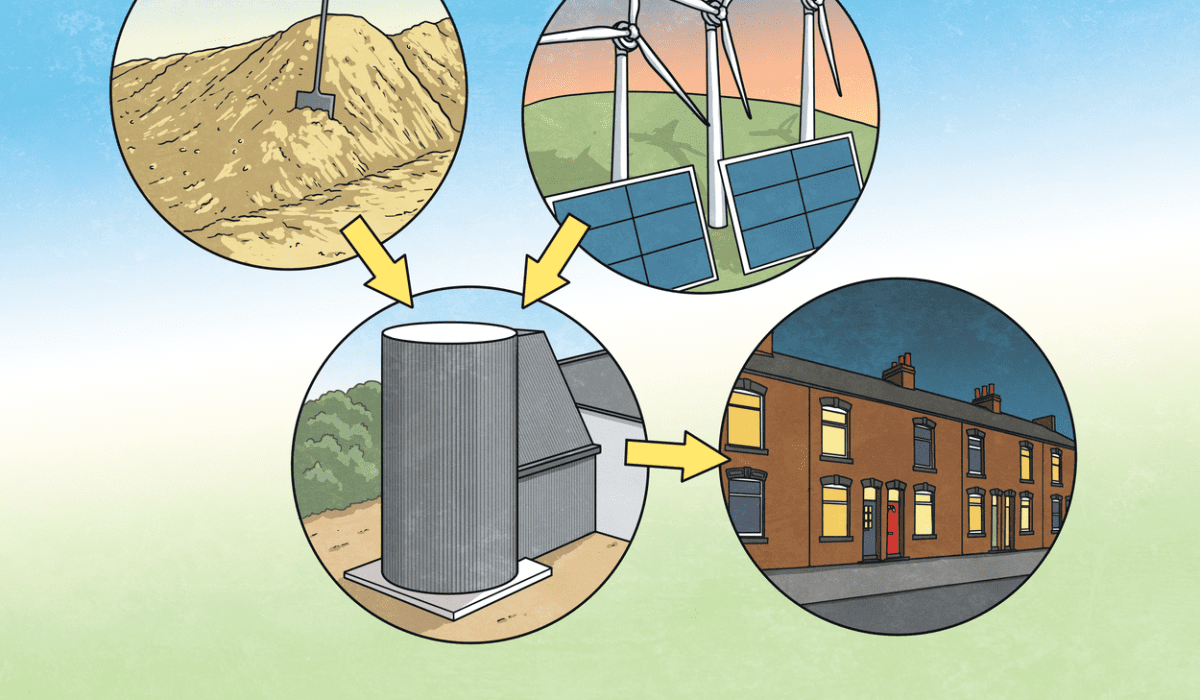"Dream, Dream, Dream! Conduct these dreams into thoughts, and then transform them into action."
- Dr. A. P. J. Abdul Kalam
"Dream, Dream, Dream! Conduct these dreams into thoughts, and then transform them into action."
- Dr. A. P. J. Abdul Kalam
7 Jun 2024
Researchers and engineers are always looking for new and creative ways to store energy to find sustainable energy solutions. One such exciting invention is the sand battery, a system that effectively stores and distributes energy by utilizing the power of plentiful materials. We'll dive into the intriguing realm of sand batteries in this post, looking at their possible uses, workings, and implications for a more environmentally friendly future.
The Science Behind Sand Batteries
Sand-derived silicon is a crucial component of sand batteries, commonly referred to as silicon-based batteries. Among its many benefits for energy storage applications are silicon's outstanding electrochemical characteristics, low cost, and high abundance. The anode material in a sand battery is silicon, which takes the place of graphite, which is often utilized in lithium-ion batteries. Lithium ions go from the cathode to the anode during charging, where they are retained in the silicon structure. Sand batteries may be more effective and potent than graphite since silicon has a higher energy density due to its capacity to absorb a large number of lithium ions.
Finnish researchers have installed the world's first fully working "sand battery" which can store green power for months at a time.

'Sand' and concrete 'silos' with refractory insulation are very inexpensive materials that can lead to low-cost energy storage.
(Source: Google Images)
Obstacles and Novelties ~
Although silicon brings unique obstacles, it also holds considerable promise for energy storage. The propensity of silicon to expand and contract during the charging and discharging cycles is a major obstacle that shortens battery lifespan and causes material degradation. Engineers and researchers have been putting a lot of effort into coming up with creative solutions to these problems. Several strategies are being investigated to improve the efficiency and longevity of sand batteries, including nanostructuring silicon particles, adding silicon to composite materials, and investigating sophisticated electrode designs.
Applications of Sand Batteries ~
Sand batteries offer a wide range of potential applications across different sectors ~

Could They Be A Real Game Changer?
(Source: Google Images)

Trusting The Process For a Better Future ~
(Source: Google Images)
The Path to a Sustainable Future ~
A viable path forward for the development of sustainable energy storage technologies is through sand batteries. Through the utilization of plentiful resources such as silicon and sand, these batteries present a sustainable and eco-friendly substitute for traditional energy storage methods. Scalability, cost-effectiveness, and manufacturing scalability are some of the remaining issues with sand batteries that must be resolved as research and development activities move forward. We can hasten the development and implementation of sand batteries by working together with scientists, engineers, politicians, and industry partners, opening the door to a more sustainable, greener, and cleaner future.
The feasibility of sand as an energy storage solution is being demonstrated by the testing and application of sand battery technology in several projects throughout the world. It also highlights the technology's potential for scalability and integration with present energy infrastructures. Even with the promise, difficulties still exist. Considerable research and development work is needed before sand battery technology can be developed and implemented on a wide basis. Therefore, to remove obstacles and promote the innovation required for the broad adoption of this potentially revolutionary battery technology, both public and private investments are essential.